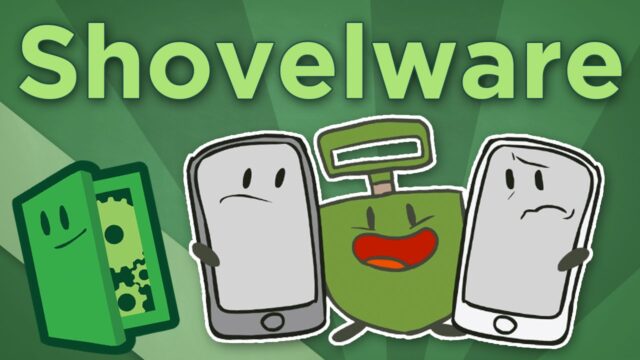So, picture this: you’re leisurely browsing through your go-to games store, stumbling upon heaps of titles that boast super cheap prices or claim to have amazing discounts—maybe even a jaw-dropping bundle of 25 games for $2.99.
Excited about snagging a fantastic deal, you dive in and make several purchases, only to realize they’re nothing short of woeful when you hit that play button.
Congratulations, you’ve just dipped your toes into the murky waters of shovelware. Let’s unravel the mystery behind shovelware, explore what it entails, and equip you with the tools to spot and avoid these digital disasters so you never feel ripped-off.
Table of Contents
ToggleWhat Is Shovelware?
To navigate the treacherous terrain of gaming, one must comprehend the enigma known as shovelware. In essence, shovelware refers to games lacking the polish of a finished product. Imagine games with atrocious graphics, plagued by game-breaking bugs, and boasting a terrible (or no) storyline. They might have just one or two (or zero) elements that barely qualify them as a ‘game’ in the first place.
In a nutshell, a shovelware title is destined to play, look, and sound bad—a creation of incredibly inferior quality that offers little to no value to the buyer. Often, they masquerade as collections of pointless mini-games thrown together under one title, though plenty of standalone disasters fall under the shovelware umbrella.
To make matters worse, many shovelware game developers aim to dupe the inexperienced gamer. The allure of getting 25 games for the price of one may seem like a great deal, right? Erm… no. Wrong.
Examples of Shovelware:
Regrettably, the gaming landscape is rife with shovelware, and recognizing it is paramount to avoiding disappointment. Imagine software collections bundled with a PC, boasting names like “1,001 Games Collection”—a classic shovelware move.
Nintendo’s Wii era witnessed an influx of shovelware, with titles like Go Play Lumberjacks and Cruise Ship Vacation Games offering nothing but terrible mini-games. PlayStation, Xbox, and even the Steam marketplace aren’t immune, hosting their fair share of shovelware disasters.
Think Outbreak games on PlayStation and Xbox or obscure titles on Steam’s Upcoming page like “Searching for objects in the forest“—all potential shovelware culprits.
How to Spot and Avoid Shovelware:
- Check Reviews:
Before hitting that buy button, consult reviews on reputable websites and user reviews on the store. It’s a quick way to gauge if a game is worth your time and money.
- Game Description Scrutiny:
Shovelware developers often skimp on game descriptions. Look out for spelling mistakes, vague descriptions, or anything that doesn’t quite add up. A poorly described game may be a poorly developed one.
- Visual Inspection:
A picture is worth a thousand words. Scrutinize screenshots and videos. If it looks like it was crafted on MS Paint, you might be dealing with shovelware.
Say No to Shovelware:
Remember the age-old adage – if it sounds too good to be true, it probably is. A collection of 30 games for a few dollars? Proceed with caution. Do your research before parting with your hard-earned cash to ensure your gaming collection doesn’t end up with a regrettable addition like Charm Girls Club Pajama Party.
In a world overflowing with gaming gems, steer clear of the shovelware pitfalls. Arm yourself with knowledge, embrace the discerning gamer within, and say no to digital disappointments. Happy gaming!



















